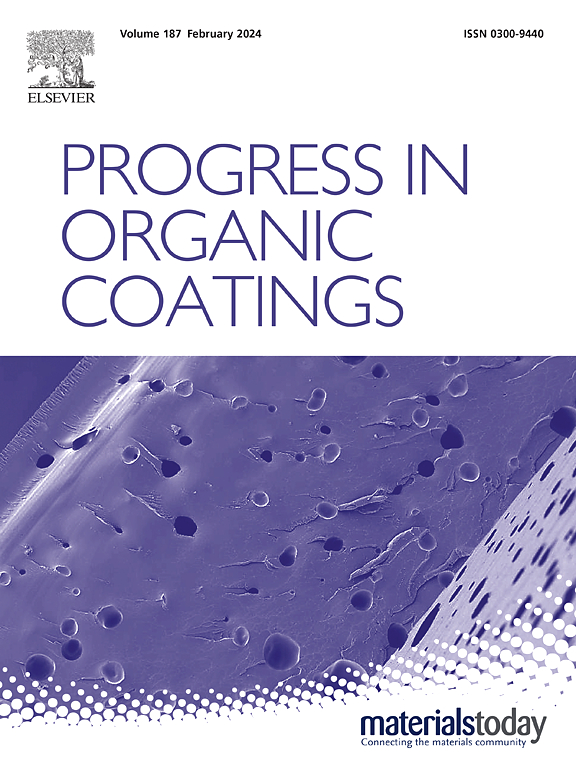Bio-based waterproof and oil-repellent coatings for paper packaging: Synergistic effect of oleyl alcohol and chitosan on performance enhancement
IF 7.3
2区 材料科学
Q1 CHEMISTRY, APPLIED
引用次数: 0
Abstract
Compared to petroleum-based plastics, paper-based materials are biodegradable and renewable, effectively easing resource overconsumption and environmental pollution issues. However, their poor water and oil repellency restricts applications in food packaging. Adding water and oil repellents can enhance paper's barrier properties, but traditional fluorine-containing coatings pose health risks like biotoxicity, accumulation, and migration, leading to global regulatory restrictions. Thus, developing green, biodegradable, bio-based water and oil repellent coatings is the future trend. In this study, taking advantage of the high reactivity of cyanuric chloride (TCT), a chitosan-derived coating (CHI-g-OA2) with a double hydrophobic chain structure was successfully constructed. The formula for the preparation was optimized by the response surface method. This “molecular modification” strategy, which grafts hydrophobic oleyl alcohol chains onto chitosan molecular chains to successfully construct a hydrophobic barrier, effectively solves the problem where competitive hydrogen bonding disrupts the dense hydrogen bond network formed within and between chitosan molecules, leading to significant attenuation of barrier performance. It also achieves the synergistic improvement of the material's waterproof and oil-repellent properties while retaining the original oil and gas barrier function, which meets the standard for food packaging materials. In addition, the tensile strength of the coated paper has been increased, showing good mechanical and thermal stability.

纸包装用生物基防水拒油涂料:油醇和壳聚糖对性能增强的协同作用
与石油基塑料相比,纸基材料可生物降解,可再生,有效缓解资源过度消耗和环境污染问题。然而,它们的拒水性和拒油性差限制了在食品包装中的应用。添加防水和防油剂可以增强纸张的阻隔性能,但传统的含氟涂料会带来生物毒性、积累和迁移等健康风险,导致全球监管限制。因此,开发绿色、可生物降解、生物基防水性和防油涂料是未来的发展趋势。本研究利用三聚氰胺(TCT)的高反应性,成功构建了具有双疏水链结构的壳聚糖衍生涂层(CHI-g-OA2)。利用响应面法优化了该制剂的配方。这种“分子修饰”策略将疏水油醇链接枝到壳聚糖分子链上,成功构建疏水屏障,有效解决了竞争性氢键破坏壳聚糖分子内部和分子之间形成的致密氢键网络,导致屏障性能显著衰减的问题。在保留原有油气阻隔功能的同时,实现了材料防水拒油性能的协同提升,符合食品包装材料标准。涂布纸的抗拉强度也有所提高,表现出良好的机械稳定性和热稳定性。
本文章由计算机程序翻译,如有差异,请以英文原文为准。
求助全文
约1分钟内获得全文
求助全文
来源期刊

Progress in Organic Coatings
工程技术-材料科学:膜
CiteScore
11.40
自引率
15.20%
发文量
577
审稿时长
48 days
期刊介绍:
The aim of this international journal is to analyse and publicise the progress and current state of knowledge in the field of organic coatings and related materials. The Editors and the Editorial Board members will solicit both review and research papers from academic and industrial scientists who are actively engaged in research and development or, in the case of review papers, have extensive experience in the subject to be reviewed. Unsolicited manuscripts will be accepted if they meet the journal''s requirements. The journal publishes papers dealing with such subjects as:
• Chemical, physical and technological properties of organic coatings and related materials
• Problems and methods of preparation, manufacture and application of these materials
• Performance, testing and analysis.
 求助内容:
求助内容: 应助结果提醒方式:
应助结果提醒方式:


